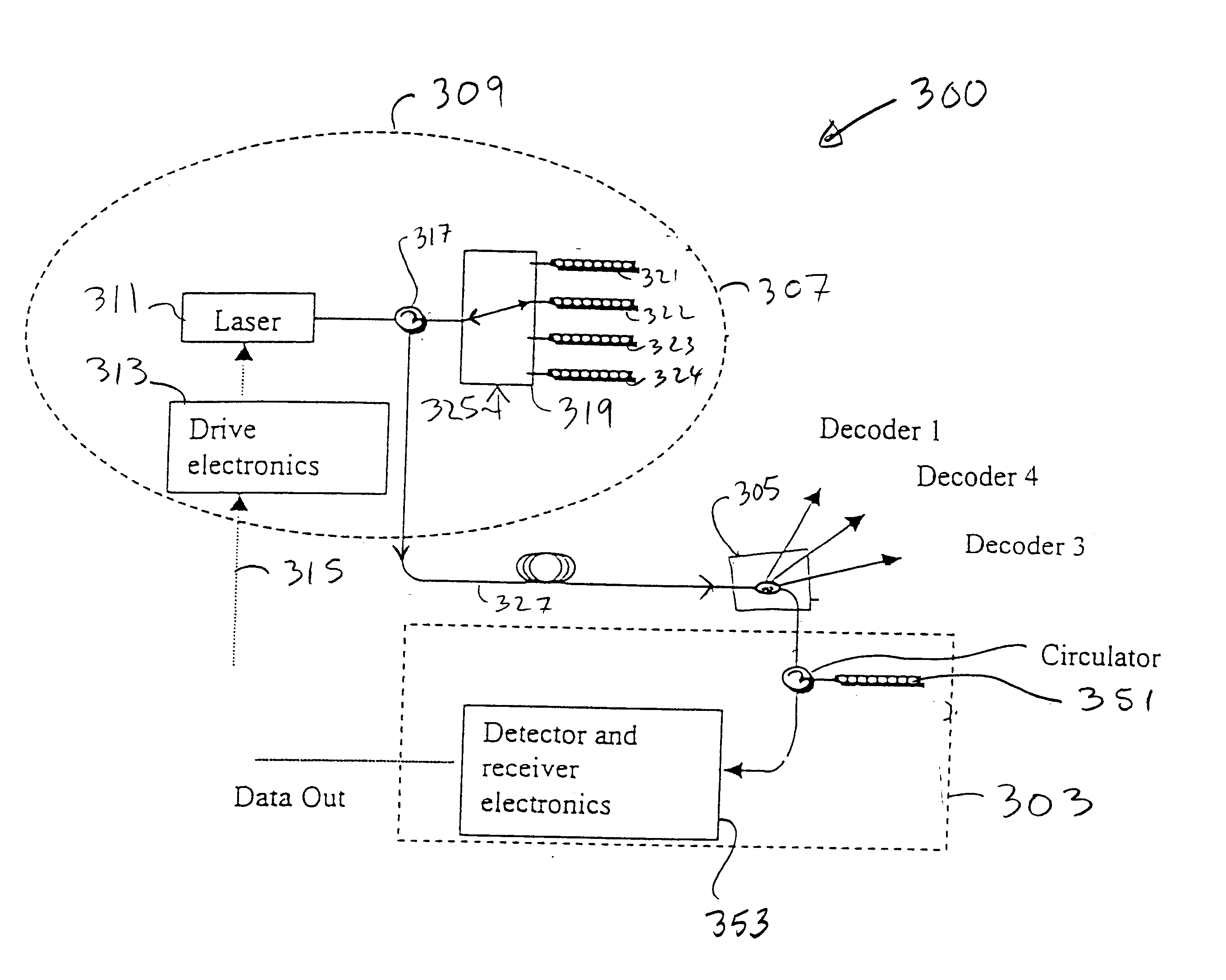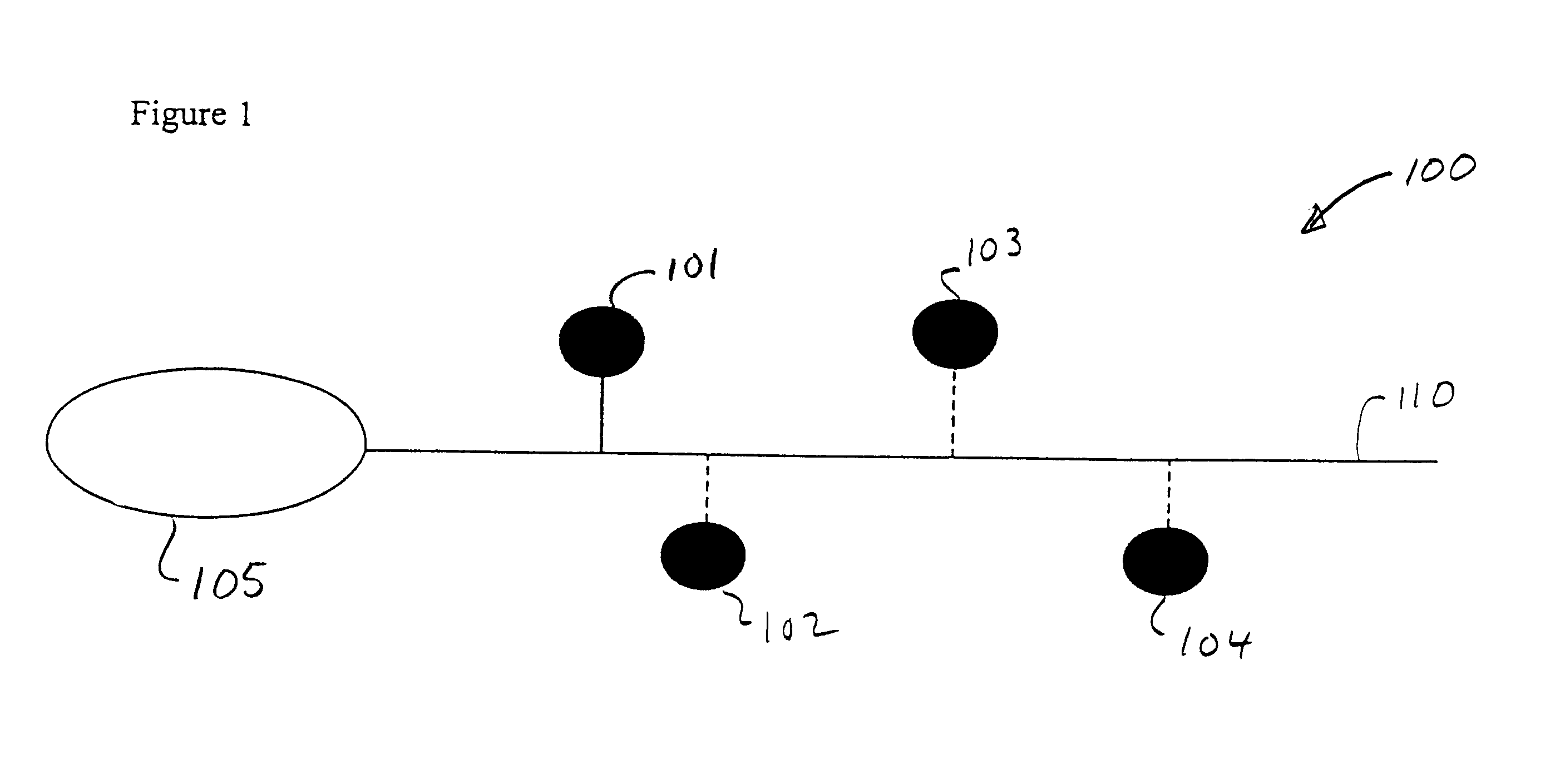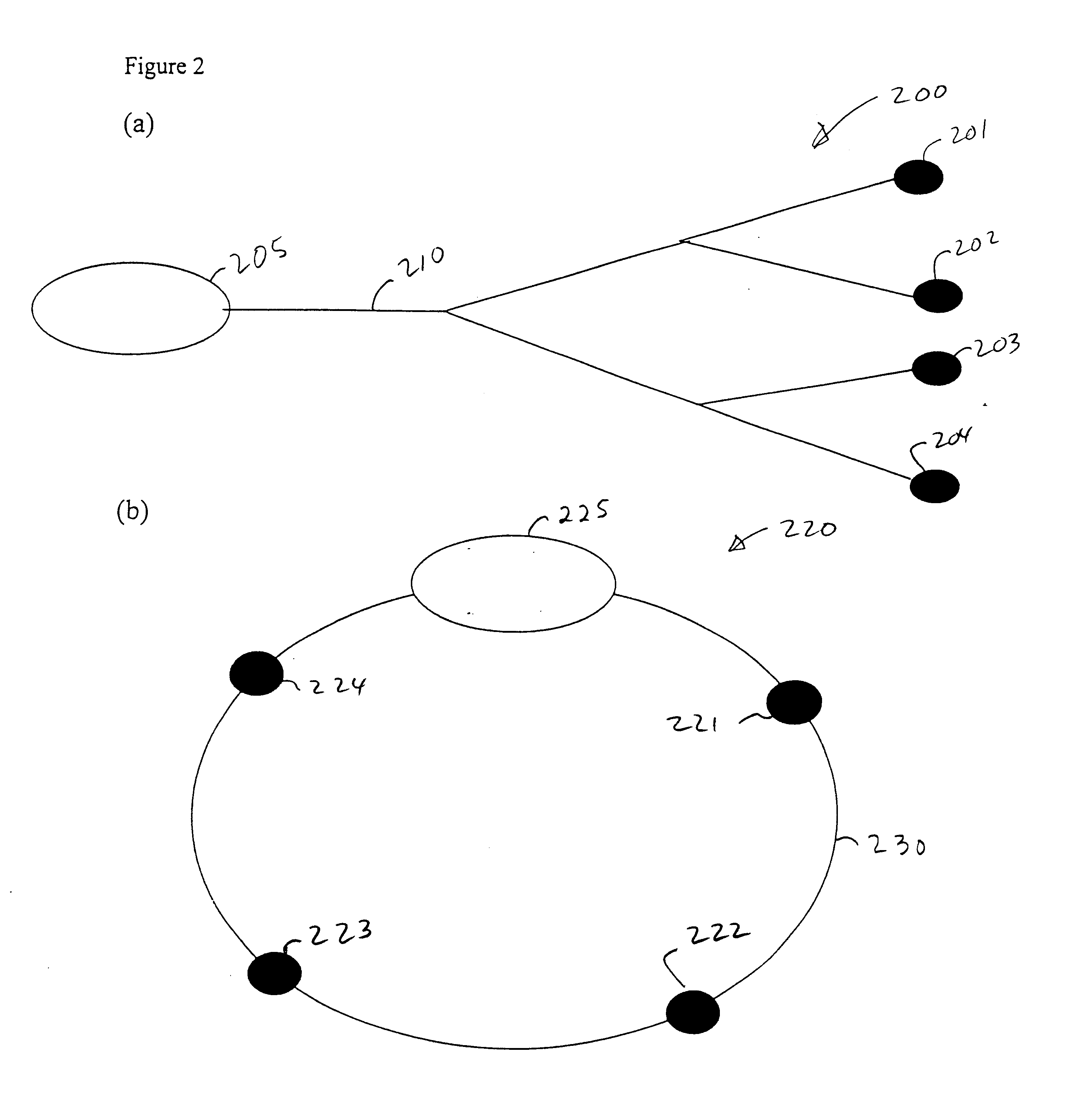Code-switched optical networks
a technology of optical networks and code switches, applied in the field of optical communication systems and methods, can solve the problems of high cost of providing multiple lasers, and high cost of to-electronic-to-optical conversion at each network nod
- Summary
- Abstract
- Description
- Claims
- Application Information
AI Technical Summary
Benefits of technology
Problems solved by technology
Method used
Image
Examples
Embodiment Construction
Communication systems, networks, and methods are disclosed that do not require active switching elements outside of a master node, but rather use optical coding to route or switch optical data streams to one or more of several destinations. Optical codes are applied to the optical data streams to determine the destination of the data, i.e., destinations are selected based on optical codes. Such systems are referred to herein as “code-switched.” A representative communication system includes a master node that transmits an optical signal to a remote node selected from a set of remote nodes. The master node directs the optical signal to the selected remote node by encoding the signal with a remote-node-specific optical code (“channel code”). Channel codes can be amplitude codes, frequency codes, or phase codes, or combinations thereof. Channel codes can be binary codes or can have three or more associated code values. For example, a channel code can be defined as a series of code elem...
PUM
 Login to View More
Login to View More Abstract
Description
Claims
Application Information
 Login to View More
Login to View More - R&D
- Intellectual Property
- Life Sciences
- Materials
- Tech Scout
- Unparalleled Data Quality
- Higher Quality Content
- 60% Fewer Hallucinations
Browse by: Latest US Patents, China's latest patents, Technical Efficacy Thesaurus, Application Domain, Technology Topic, Popular Technical Reports.
© 2025 PatSnap. All rights reserved.Legal|Privacy policy|Modern Slavery Act Transparency Statement|Sitemap|About US| Contact US: help@patsnap.com



